Seagrass-Watch
Global Seagrass Observing Network
We strive to educate and collaborate with likeminded conservationists to make a difference environmentally and socially.
Seagrass-Watch Global Seagrass Observing Network (established in 1998) is a not-for-profit organisation that accurately monitors the status and trends in seagrass condition. The network has conducted over 5914 assessments at 418 sites across 26 countries, involving thousands of dedicated participants.
Seagrass-Watch is one of the largest long-term seagrass observing programs globally and is highly recognised for its scientific rigour. Seagrass-Watch participants are from a wide variety of backgrounds. All share a common interest in marine conservation. Most participants are associated with universities & research institutions, government (local & state) or non-government organisations.
Seagrass-Watch partners scientists with citizens, as people involved in the program develop a deep sense of custodianship and understanding of their local marine environments that reaches throughout the wider community.
Coastal communities are concerned about the condition and loss of seagrasses in their regions and are keen to play a primary information-gathering role and work in partnership with management agencies.
- Green Island intertidal monitoring (Australia)
- Photographer: Len McKenzie
Research, Educate, Collaborate
to make a difference environmentally and socially
Numbers speak for themselves
Aims
raise awareness on seagrass ecosystems and provide an early warning of major coastal environment changes.
The program has a simple philosophy of involving those who are concerned, and involves collaboration/partnerships between scientists, community and data users (environment management agencies).
Goals
- To educate the wider community on the importance of seagrass resources
- To raise awareness of coastal management issues
- To build the capacity of local stakeholders in the use of standardised scientific methodologies
- To conduct long-term monitoring of seagrass & coastal habitat condition
- To provide an early warning system of coastal environment changes for management
- To support conservation measures which ensure the long-term resilience of seagrass ecosystem
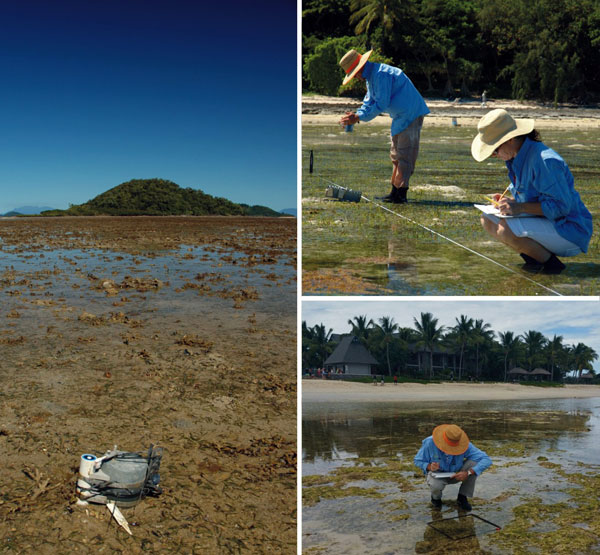
background
Since it’s genesis in 1998, Seagrass-Watch has expanded internationally to 26 countries. Monitoring is now occurring at over 415 sites across 21 countries and an additional 5 countries participate but are currently at resource identification stage.
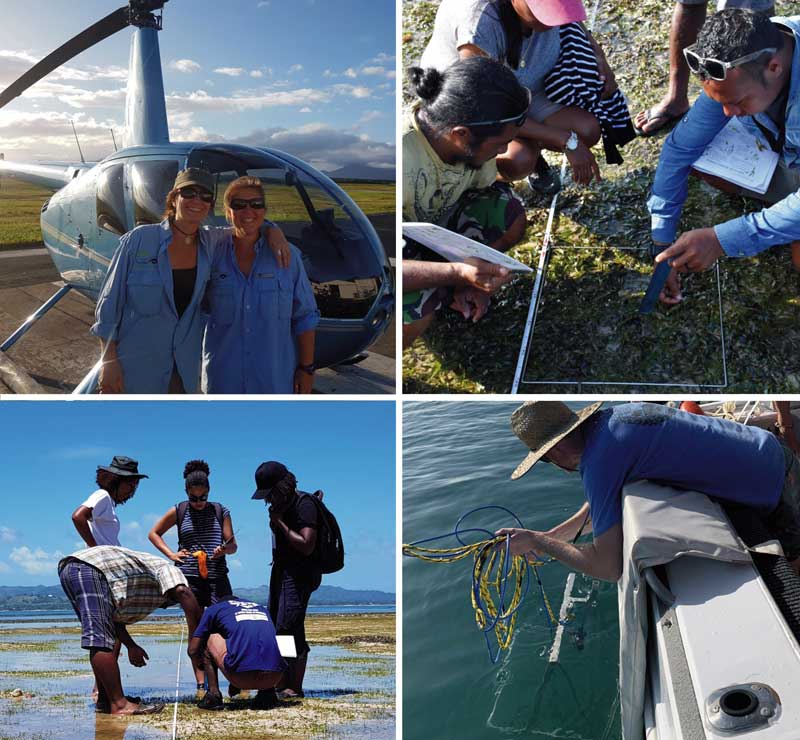
Participants
Partnering scientists & citizens to accurately monitor the status and trends in seagrass condition. All share a common interest in marine conservation, nd are keen to play a primary information-gathering role and work in partnership with government agencies
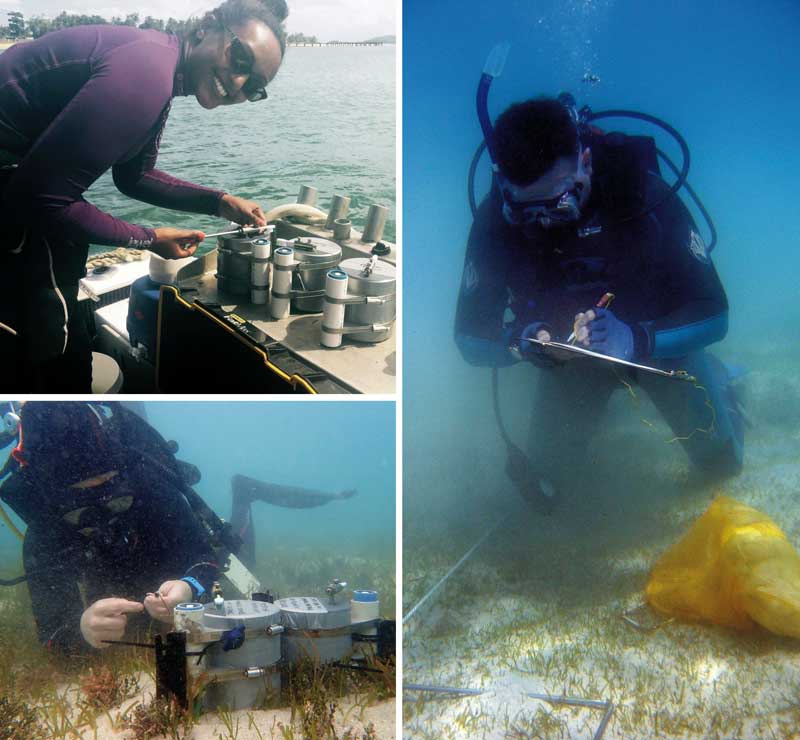
Research
The program has a strong scientific underpinning with an emphasis on consistent data collection, recording and reporting. Scientific, statistical, data management, data interpretation and logistic support underpins all monitoring efforts.
Research
The program has a strong scientific underpinning with an emphasis on consistent data collection, recording and reporting. Scientific, statistical, data management, data interpretation and logistic support underpins all monitoring efforts. Seagrass-Watch identifies areas important for seagrass species diversity and conservation and the information collected is used to assist the management of coastal environments and to prevent significant areas and species being lost.
Seagrass-Watch monitoring efforts are vital to assist with tracking global patterns in seagrass health, and assess the human impacts on seagrass meadows, which have the potential to destroy or degrade these coastal ecosystems and decrease their yield of natural resources. Responsive management based on adequate information will help to prevent any further significant areas and species being lost.
To protect the valuable seagrass meadows along our coasts, everyone must work together.
- Subtidal Seagrass research (Solomon Islands)
- Photographer: David Wachenfeld
About us
Seagrass-Watch global seagrass observing network partners scientists with citizens to accurately monitor the status and trends in seagrass condition. Since it’s genesis in 1998, Seagrass-Watch has now expanded internationally to 26 countries. Monitoring is now occurring at over 408 sites across 21 countries and an additional 5 countries participate but are currently at resource identification stage.
participants
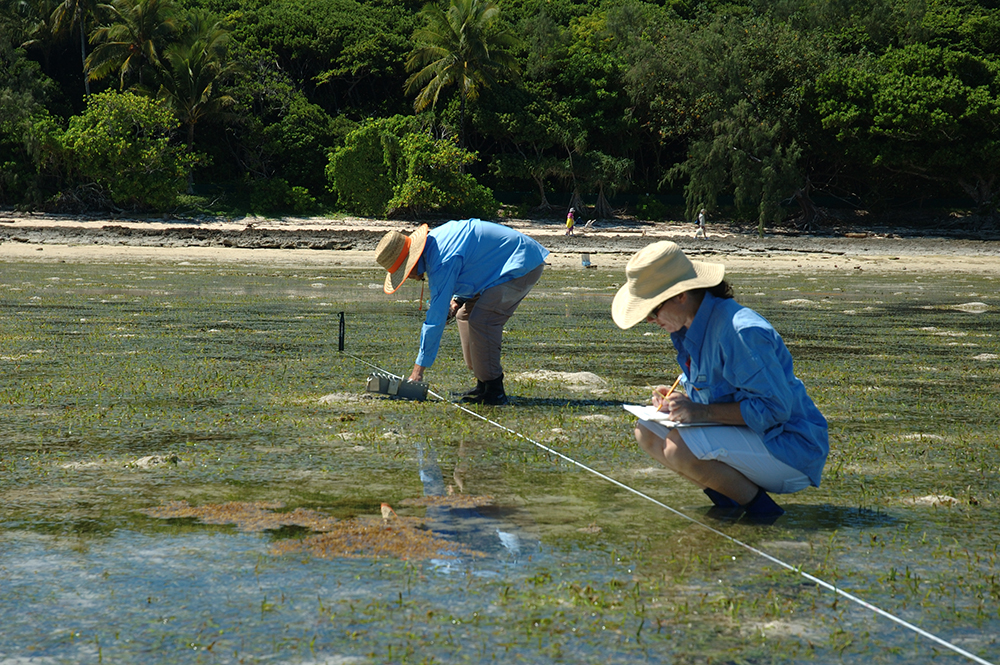
research
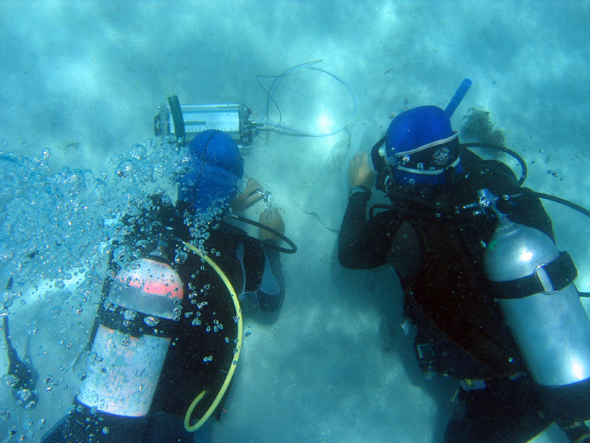
The program has a strong scientific underpinning with an emphasis on consistent data collection, recording and reporting. Scientific, statistical, data management, data interpretation and logistic support underpins all monitoring efforts. Seagrass-Watch identifies areas important for seagrass species diversity and conservation and the information collected is used to assist the management of coastal environments and to prevent significant areas and species being lost.
Seagrass-Watch monitoring efforts are vital to assist with tracking global patterns in seagrass health, and assess the human impacts on seagrass meadows, which have the potential to destroy or degrade these coastal ecosystems and decrease their yield of natural resources. Responsive management based on adequate information will help to prevent any further significant areas and species being lost. To protect the valuable seagrass meadows along our coasts, everyone must work together.
aims
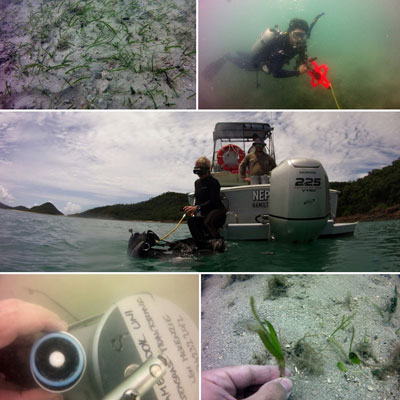
raise awareness on seagrass ecosystems and provide an early warning of major coastal environment changes. The program has a simple philosophy of involving those who are concerned, and involves collaboration/partnerships between scientists, community and data users (environment management agencies).
goals
- To educate the wider community on the importance of seagrass resources
- To raise awareness of coastal management issues
- To build the capacity of local stakeholders in the use of standardised scientific methodologies
- To conduct long-term monitoring of seagrass & coastal habitat condition
- To provide an early warning system of coastal environment changes for management
- To support conservation measures which ensure the long-term resilience of seagrass ecosystems